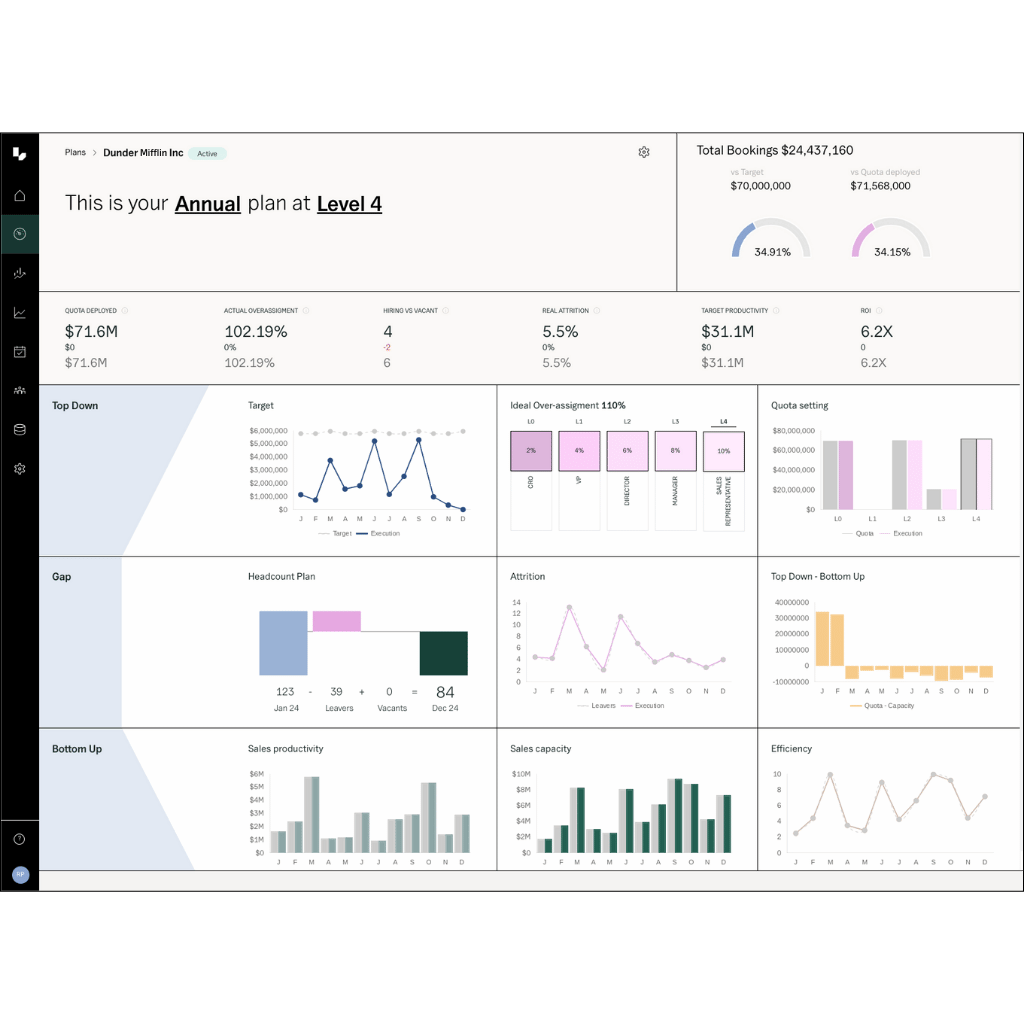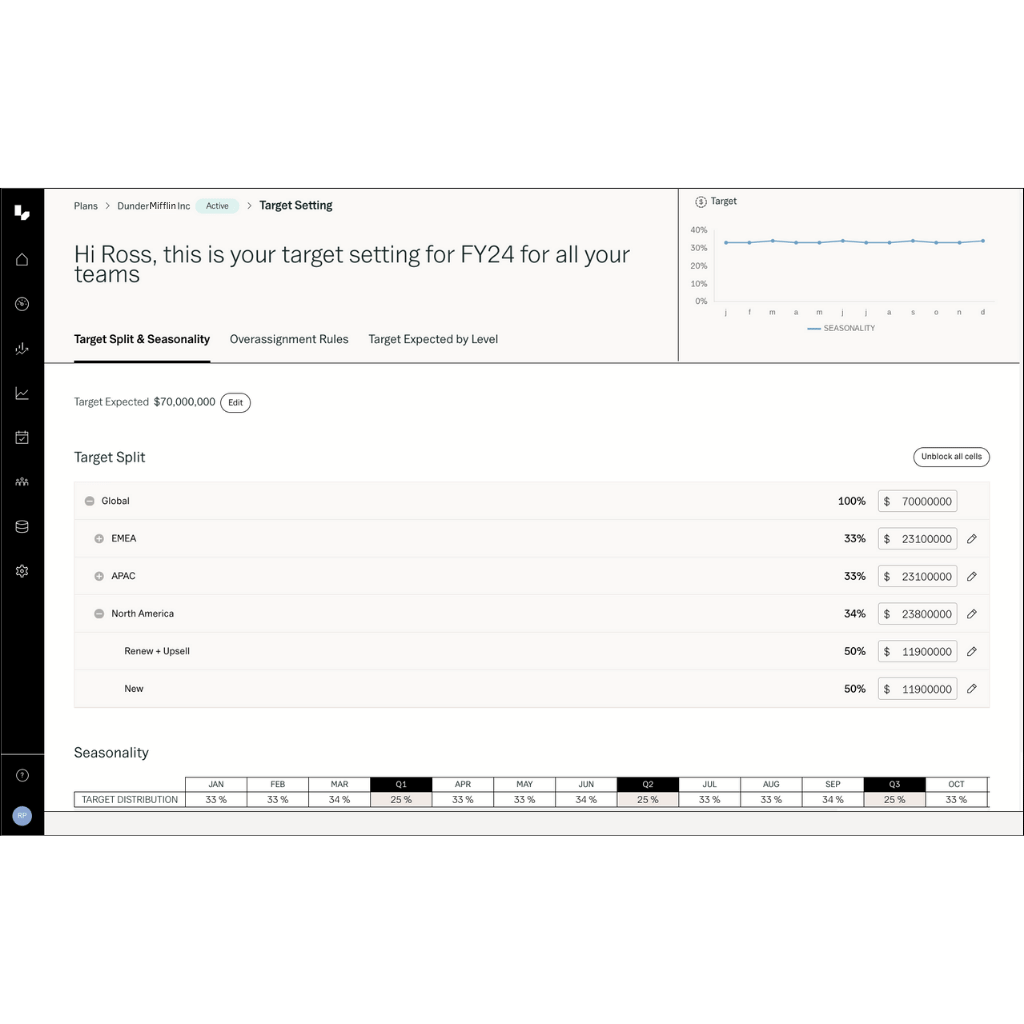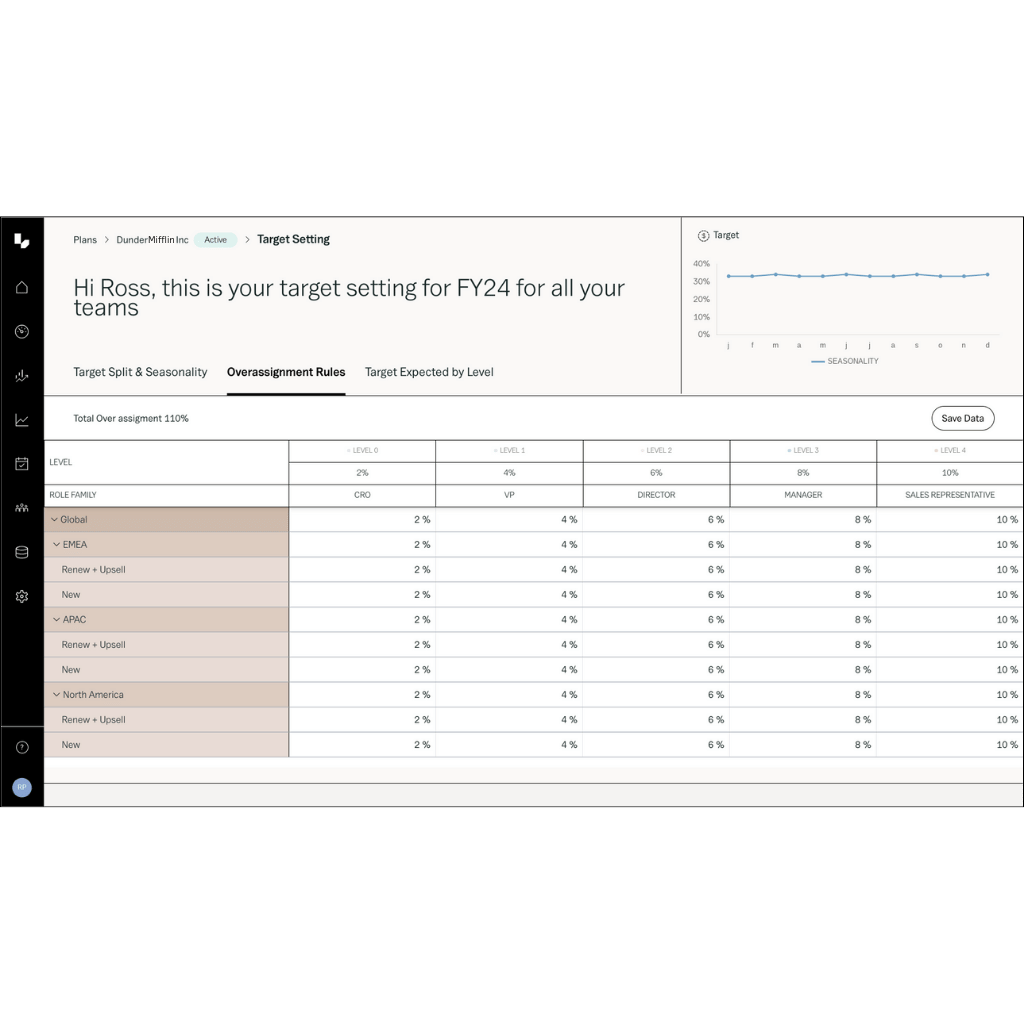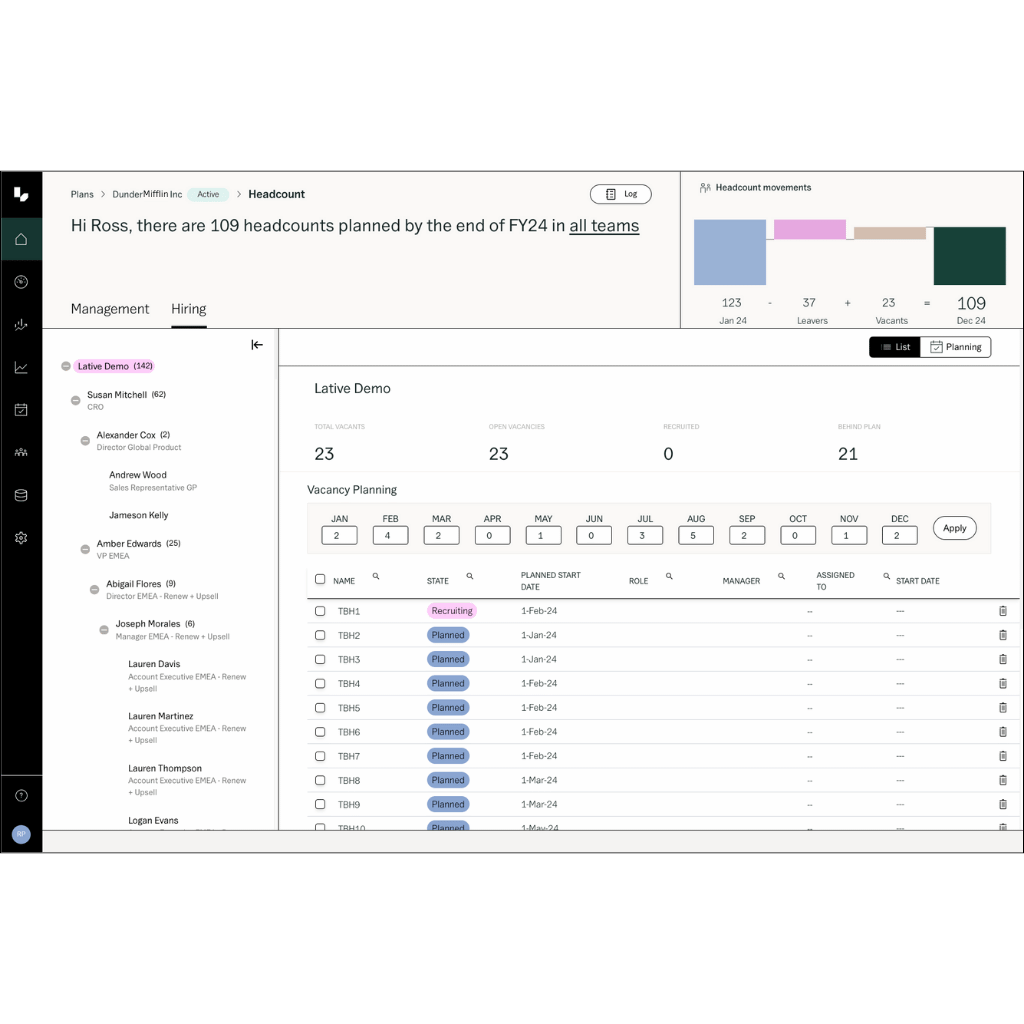
Automate your annual revenue planning process by connecting top-down targets to real-world performance data, streamlining target-setting, optimizing hiring and investment plans, and keeping your revenue strategy on track.

Connect top-down targets to bottoms-up operational data to close performance gaps and ensure your annual revenue planning efforts are grounded in reality.


Distribute targets and quotas efficiently across your organization, down to each individual salesperson, with a clear, automated process that eliminates reliance on spreadsheets.
Automate over-assignment distribution at every level with ease to create a cushion for unexpected challenges, ensuring your plan aligns with realistic expectations and performance metrics.


Create a comprehensive sales organization design and hiring plan for the year, modeling key dimensions to meet your growth goals.
Set attrition targets and model their impact on hiring plans by business dimension, ensuring your annual revenue plan remains realistic and accounts for expected changes.


Let’s reinvent how your sales organizations view and manage their business with Lative’s sales planning and decision intelligence platform.
Lative Limited
Dublin, Ireland
Register Number: 694940